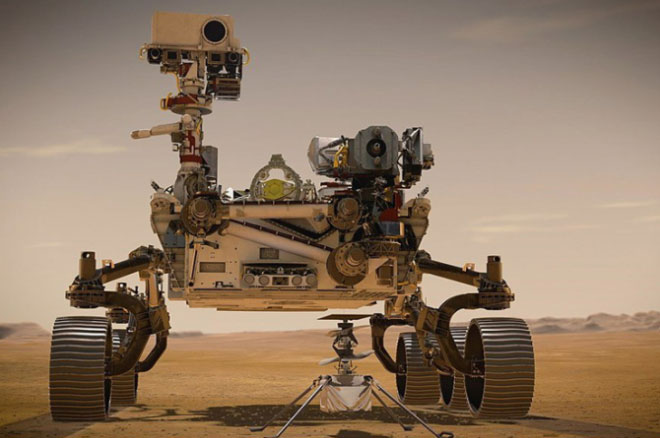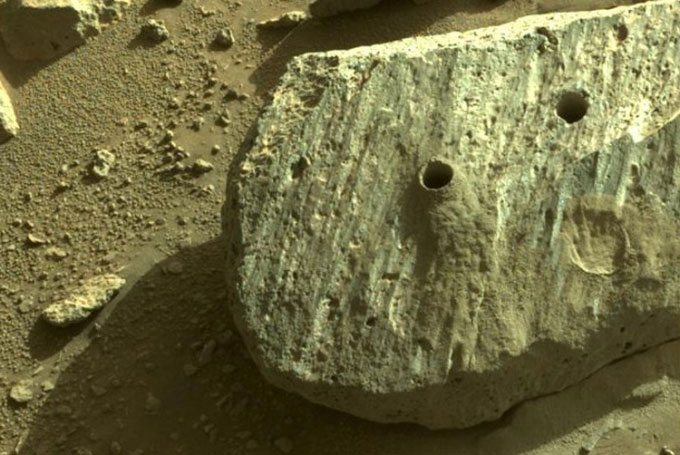The Perseverance Rover achieves significant milestones, including the first-ever drilling of rock samples on another planet and the extraction of oxygen from the Martian atmosphere.
The Perseverance Rover, along with the Ingenuity helicopter, has set new records and milestones during its year of exploration on the Red Planet. This duo landed in the Jezero Crater on February 18, 2021, marking the beginning of a year filled with achievements, such as the first successful drilling of rock samples on another planet, the first extraction of oxygen from the Martian atmosphere, and the first controlled flight on another planet.

Perseverance Rover with Ingenuity helicopter. (Photo: NASA)
The most surprising aspect of the mission is that Ingenuity has flown 19 times and operated for nearly 9 months longer than expected, according to Rick Welch, the deputy project manager for Mars 2020. Last September, NASA decided to indefinitely extend the mission of this helicopter, allowing it to serve as a scout for the rover.
Other highlights include the first high-resolution panoramic images of the area surrounding the crater taken in February 2021 and the successful demonstration of Perseverance’s new autonomous navigation system in July 2021.
Successfully collecting rock samples for the first time in September was also a notable milestone. Perseverance is actively searching for signs of ancient life in the Jezero Crater, which is believed to have once been a lake. NASA plans to return these rock samples to Earth in future missions.

Perseverance drills the first two samples from a Martian rock named Rochette on September 6 and 8, 2021. (Photo: NASA)
Although the landing in February 2021 was very successful, the rover landed slightly farther from the ancient river delta of the Jezero Crater than expected, according to expert Ken Farley at NASA. However, NASA took advantage of this distance to study the rocks in the area farther from the crater, leading to one of the mission’s most notable scientific discoveries.
“I was pretty sure we would find lake sediments. Instead, we found volcanic rocks. These rocks are very suitable for the sample return mission because they provide geological age information about the region,” Farley said.
Farley and other scientists are not certain, but they believe that Martian winds have blown away many lake sediment rocks over billions of years, exposing the volcanic rocks beneath. They believe that Perseverance will find more sedimentary rocks near the ancient delta.
Farley noted that Perseverance’s sample collection has overcome two significant challenges. First, in August 2021, the first rock the rover drilled crumbled, preventing a sample from being collected. The rover then continued its work with harder rocks. By December, rock fragments became stuck in the collection chamber. Engineers spent several weeks figuring out how to get them out. “We overcame several obstacles and learned a lot,” Farley shared.


















































